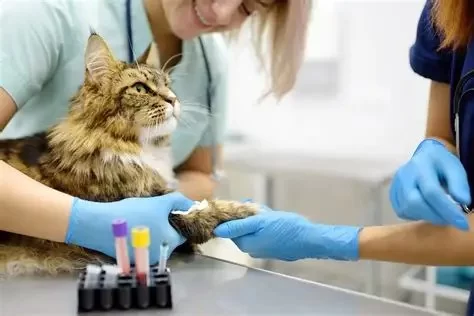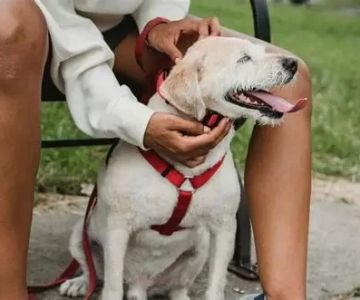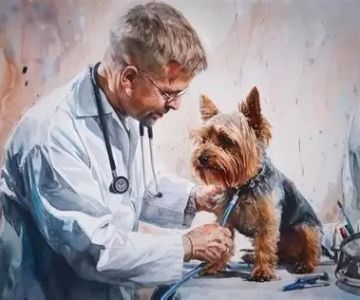- fatty-tumors-cats-basics - 1. What Are Fatty Tumors in Cats: Benign or Cause for Concern?
- fatty-tumors-cats-signs - 2. Signs That a Fatty Tumor May Be Serious
- fatty-tumors-cats-diagnosis - 3. How Vets Diagnose Fatty Tumors and Confirm Benign Status
- fatty-tumors-cats-treatment - 4. Treatment Options: Monitoring vs. Removal
- fatty-tumors-cats-prevention - 5. Prevention and Health Support for Cats Prone to Lipomas
1. What Are Fatty Tumors in Cats: Benign or Cause for Concern?
Fatty tumors in cats—often referred to as lipomas—are usually benign, slow-growing lumps composed of fat cells just beneath the skin. Most are soft, movable, and painless when touched. While benign, understanding whether a fatty tumor is harmless or a sign of something more serious is essential for every pet parent.
Most feline lipomas remain stable and harmless, especially in older or overweight cats. But your veterinarian’s insight can reveal whether a growth is a harmless fatty deposit, a cyst, or a potentially malignant mass. At Hidden Brook Veterinary, we emphasize early evaluation so cats receive the right care promptly.
2. Signs That a Fatty Tumor May Be Serious
While most fatty tumors are benign, certain red flags suggest further attention is needed:
2.1 Rapid Growth or Change in Texture
If a lump suddenly increases in size or becomes firm or immovable, it may indicate something more than fat.
2.2 Ulceration or Discharge
Ulcerated skin or oozing from the lump could be a signal of inflammation, infection, or cancerous cells beneath.
2.3 Pain or Behavioral Changes
Cats may avoid being petted or groomed around a sensitive lump. Changes in appetite, energy, or mood could also point to systemic issues linked to a problematic mass.
2.4 Case Example
A seven-year-old domestic shorthair named Oliver developed a lump near his shoulder that had been soft and unchanged for months. Then it grew firm over a few weeks. His visit to Hidden Brook Veterinary led to a biopsy—it turned out to be a benign lipoma. Because it was monitored early, no surgery was needed, and Oliver avoided unnecessary stress and cost.
3. How Vets Diagnose Fatty Tumors and Confirm Benign Status
Proper diagnosis involves several layered assessments to ensure accuracy:
3.1 Physical Palpation and Medical History
The vet evaluates texture, mobility, and rate of growth, combined with your cat’s age, weight, and health history.
3.2 Fine-Needle Aspiration or Biopsy
A minimally invasive aspiration collects cells for cytology. If inconclusive, a small tissue biopsy may follow. These techniques confirm whether cells are benign lipocytes or indicate malignancy.
3.3 Imaging When Indicated
Ultrasound or radiographs might be used to check whether the tumor extends deeper or is linked to internal structures.
At Hidden Brook Veterinary, we believe in evidence-based decisions. Our clinician may recommend ongoing monitoring or surgical removal based on diagnostic findings and your cat’s lifestyle.
4. Treatment Options: Monitoring vs. Removal
Once a fatty tumor is confirmed benign, choosing the next step depends on size, location, and potential impact on quality of life:
4.1 Active Surveillance
For small, harmless lipomas that don’t interfere with mobility or comfort, periodic checks every 3–6 months may suffice.
4.2 Surgical Removal
If the tumor grows large, becomes uncomfortable, or restricts movement—especially near joints—surgery may be advised. Most cats recover well from routine lipoma excision.
4.3 Post-Removal Care
After surgery, the healing process involves wound monitoring, activity restriction, and pain control. It’s common for cats to bounce back within a few days with minimal complications.
At Hidden Brook Veterinary, we discuss all care pathways openly—balancing risk, comfort, and cost when recommending what’s best for your feline friend.
5. Prevention and Health Support for Cats Prone to Lipomas
While fatty tumors can’t always be prevented, certain lifestyle choices reduce risk and support overall health:
5.1 Maintain a Healthy Weight
Since fatty tumors are linked to excess fat, feeding balanced meals and encouraging exercise helps minimize risk. Obesity also worsens other chronic conditions.
5.2 Regular Veterinary Checkups
Routine wellness exams catch lumps early while they’re small. Being proactive helps distinguish benign from potentially dangerous growths.
5.3 Nutritional Supplements and Skin Support
Omega‑3 fatty acids, antioxidants, and specialty skin-support diets benefit overall tissue health—and may reduce inflammation around fatty growths. Always consult your vet before starting supplements.
Our clinic at Hidden Brook Veterinary offers personalized wellness plans, including dietary strategies and supplement guidance tailored to cats prone to lumps.












